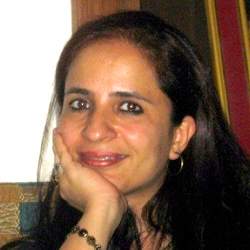
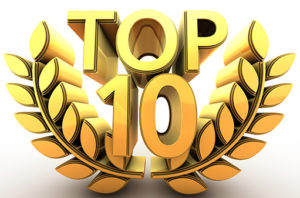 In the months leading up to the Golden 50th SIGCSE Technical Symposium in Minneapolis, the ACM SIGCSE community nominated their favorite papers, voted on the top 20, and then top 10 best papers. The 10 top papers were finally officially announced and recognized in an article by ACM and at the SIGCSE 2019 convening in Minneapolis.
In the months leading up to the Golden 50th SIGCSE Technical Symposium in Minneapolis, the ACM SIGCSE community nominated their favorite papers, voted on the top 20, and then top 10 best papers. The 10 top papers were finally officially announced and recognized in an article by ACM and at the SIGCSE 2019 convening in Minneapolis.
The best paper nominees created a healthy buzz on social media through the voting process, as have the awarded papers ever since the Top 10 best papers were announced.
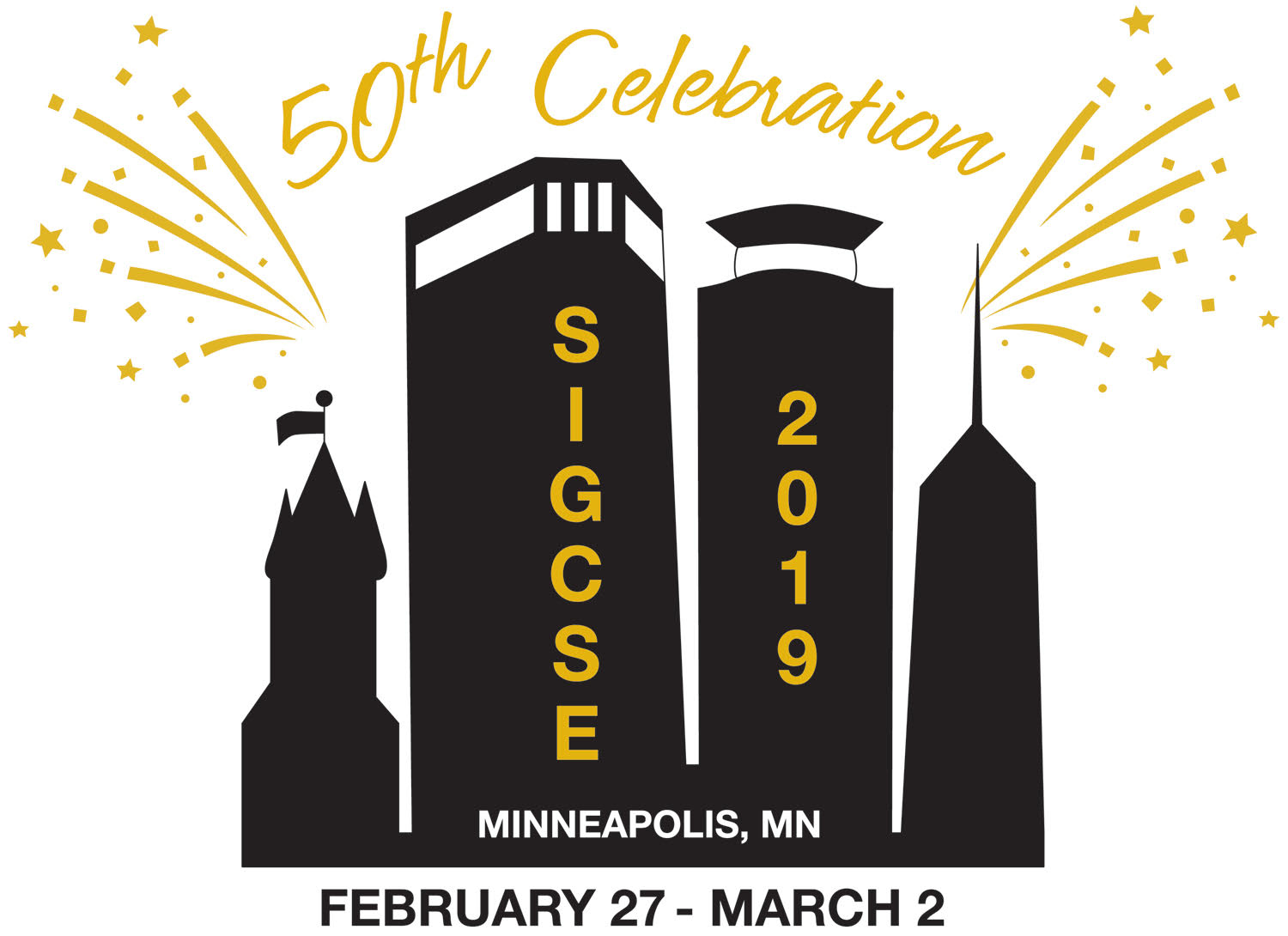 In the days leading up to the meetings, presentations, and celebrations that spanned Feb. 27 to Mar. 2, 2019 in freezing cold Minneapolis, SIGCSE_TS, SIGCSE’s official twitter account also shared some interesting statistics on the top SIGCSE authors and institutions in the ACM Digital Library—the archive of the ACM SIGCSE. I have captured these top 10 lists along with the 10 best papers in the image below:
In the days leading up to the meetings, presentations, and celebrations that spanned Feb. 27 to Mar. 2, 2019 in freezing cold Minneapolis, SIGCSE_TS, SIGCSE’s official twitter account also shared some interesting statistics on the top SIGCSE authors and institutions in the ACM Digital Library—the archive of the ACM SIGCSE. I have captured these top 10 lists along with the 10 best papers in the image below:
The top 10 papers and these top 10 lists convey interesting messages and tell us a story about a 50-year-young & fast-growing community passionately pursuing computer science education as researchers and/or practitioners.
As someone who probably read her first CS education research paper about 10 years ago, and has actively published to SIGCSE only in the last 7 years, I am relatively new to this community. I find these Top 10 lists informative. Here are my own Top 10 Takeaways (although some might qualify as simply random observations :-)).
1. The Top 10 Papers
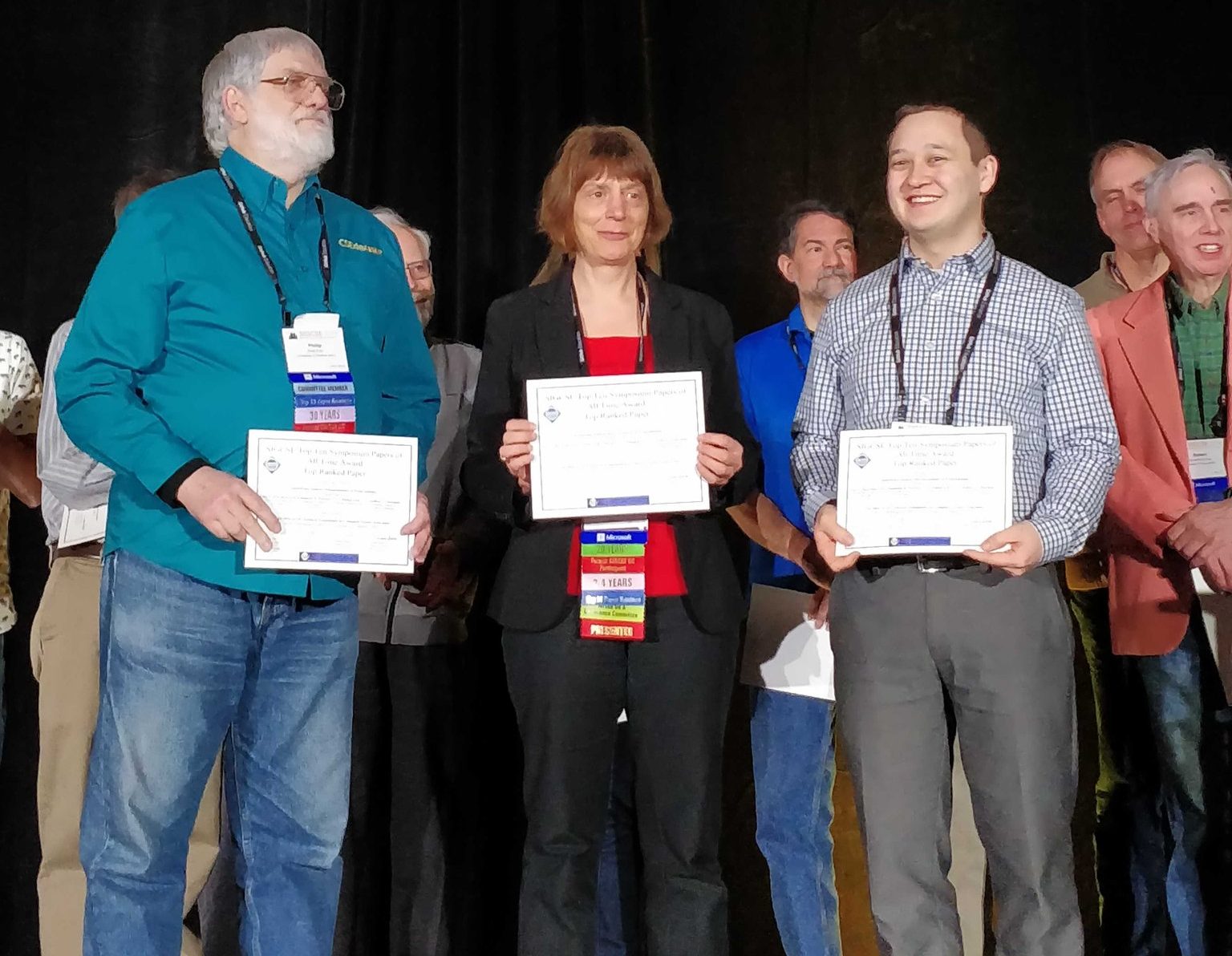 Although we do not know who all voted, my guess is that they likely represented the group currently active in SIGCSE. We have likely lost many old-timers from the 70s and 80s, so the current active SIGCSE comprises scholars who likely became active in CS education starting in the late 80s-90s i.e. three decades. As the sub-heading in the awards announcement suggests, these papers share research that has shaped the field of CS education.
Although we do not know who all voted, my guess is that they likely represented the group currently active in SIGCSE. We have likely lost many old-timers from the 70s and 80s, so the current active SIGCSE comprises scholars who likely became active in CS education starting in the late 80s-90s i.e. three decades. As the sub-heading in the awards announcement suggests, these papers share research that has shaped the field of CS education.
To my mind, the field of CS, not just CS education, owes a debt of gratitude to these researchers and their research. I believe here are some questions worth pondering over.
What does a field (and the world) owe the people who teach that discipline? What is a discipline without the people who care about teaching it well and broadening participation in the field? What would CS be without good CS education? Why don’t more CS departments care more about CS education?
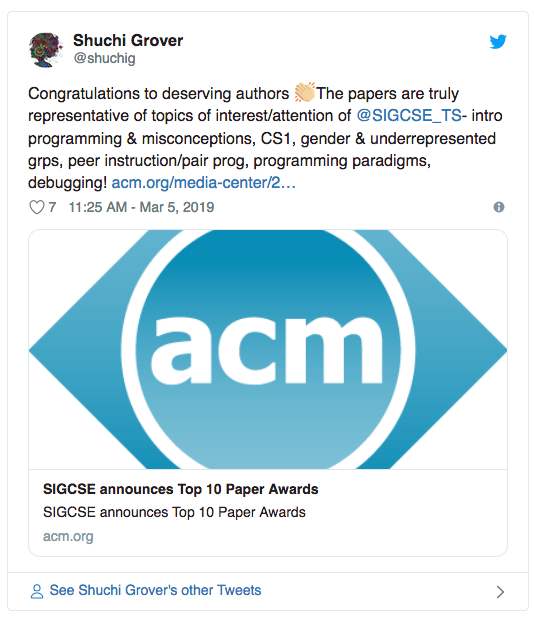 As I mentioned in my own tweet sharing ACM’s best paper awards announcement, the top 10 papers are truly representative of enduring topics that have sustained the interest and focus of attention of the community at least in these last 3 decades: introductory programming/CS1 (what/how to teach, misconceptions, debugging), underrepresentation in CS (gender, ethnic, other), student-centered pedagogies like peer instruction and pair programming, and programming paradigms. I highly recommend these 10 best (and in fact the other 10 in the top 20 list too) as required reading to anyone in CS education, but especially to those doing their PhD research in CSE. While all the top 10 papers are absolutely brilliant in my view, I discuss two papers in more detail (probably because I think they have directly impacted K-12 CS education more than the other eight award winners).
As I mentioned in my own tweet sharing ACM’s best paper awards announcement, the top 10 papers are truly representative of enduring topics that have sustained the interest and focus of attention of the community at least in these last 3 decades: introductory programming/CS1 (what/how to teach, misconceptions, debugging), underrepresentation in CS (gender, ethnic, other), student-centered pedagogies like peer instruction and pair programming, and programming paradigms. I highly recommend these 10 best (and in fact the other 10 in the top 20 list too) as required reading to anyone in CS education, but especially to those doing their PhD research in CSE. While all the top 10 papers are absolutely brilliant in my view, I discuss two papers in more detail (probably because I think they have directly impacted K-12 CS education more than the other eight award winners).
- CS1 – the what and how of the quintessential introductory computer science experience at the undergraduate level. Identifying and addressing/supporting targets of difficulty in inroductory programming such as misconceptions & debugging.
- Specific student-centered pedagogies for intro CS such as pair programming, peer instruction, and constructivism.
- Eq
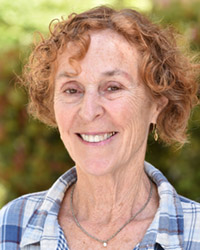 uity in CS – I believe the Fisher, Margolis, & Miller research at CMU was truly ground-breaking on many levels. It shone the spotlight on grave issues of inequity in a young field hurtling toward white, male domination. It brought methodologies like ethnography into a field not accustomed to using education research methods that are purely qualitative. It raised important issues of affect, motivation, and interest in a community concerned almost solely with the cognitive in the learning process rather than the socio-cultural as well. The field owes this work and these researchers an enormous debt of gratitude, and especially Jane Margolis, who continues to be a tireless crusader. She has been instrumental in the creation of equity-focused high school intro CS curricula such as Exploring Computer Science and its extensions—all aimed at broadening participation among underrepresented groups. Jane deservedly won the 2016 White House Champions of Change award for ensuring the ALL in CSForAll for K-12 school education.
uity in CS – I believe the Fisher, Margolis, & Miller research at CMU was truly ground-breaking on many levels. It shone the spotlight on grave issues of inequity in a young field hurtling toward white, male domination. It brought methodologies like ethnography into a field not accustomed to using education research methods that are purely qualitative. It raised important issues of affect, motivation, and interest in a community concerned almost solely with the cognitive in the learning process rather than the socio-cultural as well. The field owes this work and these researchers an enormous debt of gratitude, and especially Jane Margolis, who continues to be a tireless crusader. She has been instrumental in the creation of equity-focused high school intro CS curricula such as Exploring Computer Science and its extensions—all aimed at broadening participation among underrepresented groups. Jane deservedly won the 2016 White House Champions of Change award for ensuring the ALL in CSForAll for K-12 school education. - Programming paradigms / Visual block-based programming for novices – Steve Cooper, Wanda Dann & Randy Pausch’s (2003) paper – Teaching Objects-first In Introductory Computer Science has also been influential for 2 reasons– (1) The first is the obvious one – it touched upon a question that will always be topical to teaching intro programming – what programming language/paradigm and tool would work best to engage the novice learner and teach skills that are relevant for the time. (2) More importantly though, through this paper the world was introduced to Alice and the design principles of visual, block-based programming environments that are today the platforms de jure for introducing K-12 learners to programming. Alice was introduced as “a 3D interactive, animation, programming environment for building virtual worlds, designed for novices.” It is worth remembering that Alice and the work of Randy Pausch’s team at CMU predated current popular block-based programming tools (like Scratch, App Inventor, Snap!, etc.) by more than a decade. (I blogged about Alice in April 2008 and then updated the post when Randy Pausch passed away in July 2008.)
The Top 10 Authors and Institutions
My key takeaways/random observations on the top 10 institutions and authors for SIGCSE papers (in no particular order of relevance).
- These authors are individuals who the SIGCSE community reveres and recognizes even if they were not known for being prolific authors (although the two might be related). They are known for so much more than their contributions to the SIGCSE digital archive! It’s amazing to see Dan Garcia top the list with a whopping 61 (even if this authorship count includes papers, workshops, panels, BOFs, demos, lightning talks, nifty assignments, and posters). Congrats, Dan!
- It was great to see that I know eight authors in the Top 10 list of authors (that actually has 12 names). “Knowing” varies from being a dissertation advisor to being a regular contact on social media (& faraway dissertation mentor), being my “co-eater” out of the same Ethiopian meal plate when in Orlando for the CE21 PI meeting in 2014 (this was a singular experience!), being co-attendees in CSE/CSER workshops, and someone with whom I’ve exchanged just a few emails.
- It was also great to see Steve Cooper and Stephen Edwards appear in two places— as top 10 authors and also as authors of best papers.
- If you’re a prospective student contemplating graduate studies in CSEd research, you might consider having these these authors and institutions in your sights.
- In a world of social media, many new CER graduate students are perhaps not familiar with the names of CS Ed stalwarts who eschew social media. For example, there’s only a small handful of the many top 10 authors (and best paper authors) who are on twitter (even though the CS education community on twitter is growing by the day). I find these top 10 lists to be super useful for highlighting names that newbies may not know much about.
-
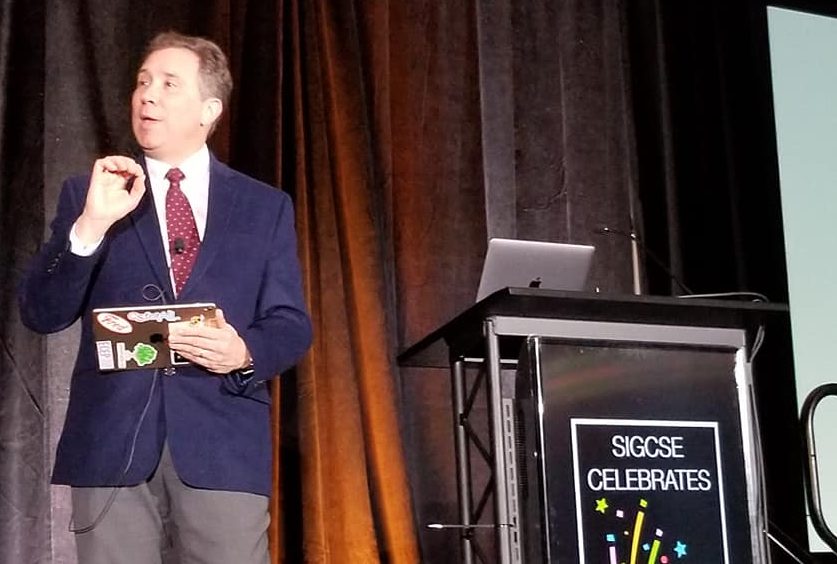 There is one specific correlation between the 3 lists that begs deeper scrutiny – GA Tech at #5 for most accepted & #1 for most citations, and the 2nd most published SIGCSE author. If I had to give that correlation a name, it might go something like “The Guzdial Effect.” I think Mark Guzdial has played a huge role in making CS education research a key focus of the School of Interactive Computing he was at in GA Tech for a full quarter of a century. Over those 25 years (and since), Mark has not only authored almost the hightest number of papers, he has mentored many PhD students at GA Tech whose work was directly or indirectly connected to CS education, graduated several PhD students of his own, and actively showcased his students’ papers and research on his widely-read blog (and now twitter account as well). Mark’s place in the pantheon of Computer Science Education has been deservedly sealed with the 2019 SIGCSE Award for Outstanding Contribution to CS Education but if someone were to look for hard statistics on Mark’s contributions, these top 10 stats do add to that story, I think!
There is one specific correlation between the 3 lists that begs deeper scrutiny – GA Tech at #5 for most accepted & #1 for most citations, and the 2nd most published SIGCSE author. If I had to give that correlation a name, it might go something like “The Guzdial Effect.” I think Mark Guzdial has played a huge role in making CS education research a key focus of the School of Interactive Computing he was at in GA Tech for a full quarter of a century. Over those 25 years (and since), Mark has not only authored almost the hightest number of papers, he has mentored many PhD students at GA Tech whose work was directly or indirectly connected to CS education, graduated several PhD students of his own, and actively showcased his students’ papers and research on his widely-read blog (and now twitter account as well). Mark’s place in the pantheon of Computer Science Education has been deservedly sealed with the 2019 SIGCSE Award for Outstanding Contribution to CS Education but if someone were to look for hard statistics on Mark’s contributions, these top 10 stats do add to that story, I think! - There are likely similar correlations between top accepted papers by institution and top 10 authors especially if those authors have been at those institutions for a long time– Dan Garcia at UC Berkeley, Susan Rodger/Owen Astrachan at Duke, Stephen Edwards/Cliff Shaffer at VA Tech, and Eric Roberts/Steve Cooper at Stanford.
- The top ranked CS schools are (usually) also top ranked among contributors to CS Education (judging by top accepted papers and citations lists!).
This, to me, was a very interesting discovery. I know we don’t like to go by US News and World Report-type of rankings, but Stanford, Berkeley, CMU, GA Tech, UC San Diego, UW Seattle, VA Tech, NCSU, Duke, …, are all ranked among the top CS schools as well.
Not all universities have CS education as an area of focus in their CS departments. And yet they appear on the list of top institutions for SIGCSE papers and citations. For example, CS departments in universities like Stanford have resisted the call to make CS education as part of their focus of research, and yet Stanford faculty continue to work on ways of teaching CS well and publishing their research. Stanford always has a large contingent at SIGCSE – many of whom are associated with the popular Nifty Assignments – that now appears to be 20 years old! -
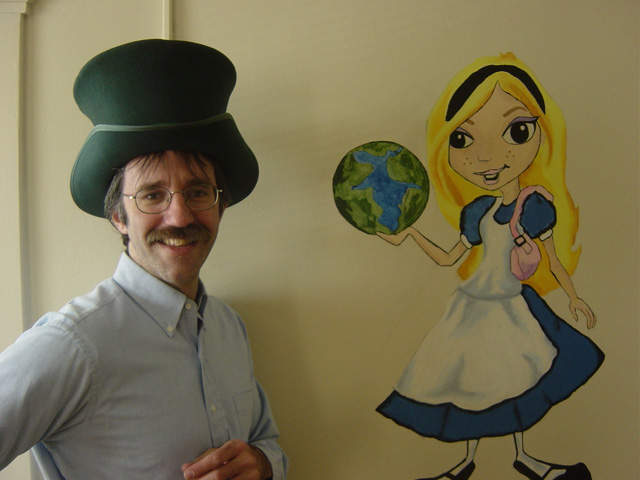 The last on my list of 10 takeaways here is a personal one. It fills me with immense joy that these stats serve to highlight Steve Cooper’s enormous contributions to the field of CS education and CER. He is perhaps best known for his work with Alice—training countless teachers to teach Alice, co-authoring Alice textbooks, and developing Alice-related curricular materials. He is also well-known for being a genuinely nice person. So I want to devote a few lines to sharing my own personal connection with Steve.
The last on my list of 10 takeaways here is a personal one. It fills me with immense joy that these stats serve to highlight Steve Cooper’s enormous contributions to the field of CS education and CER. He is perhaps best known for his work with Alice—training countless teachers to teach Alice, co-authoring Alice textbooks, and developing Alice-related curricular materials. He is also well-known for being a genuinely nice person. So I want to devote a few lines to sharing my own personal connection with Steve.
I succeeded in the rare accomplishment of being among the first (if not the first) at Stanford University to complete a Ph.D. focused on K-12 CS education. My committee comprised faculty from both the Stanford Graduate School of Education and the CS department. My dissertation was co-advised by Roy Pea (my main advisor from the GSE/Learning Sciences) and Steve Cooper (CS). Mehran Sahami was the chair of my committee. While Roy Pea was instrumental in bringing me into the world of learning sciences & ISLS/ICLS/CSCL, Steve Cooper opened up the world of CS Education & ACM/SIGCSE/ITiCSE/ICER. [I am proud to call both communities my home even today, especially as the two fields are drawing ever closer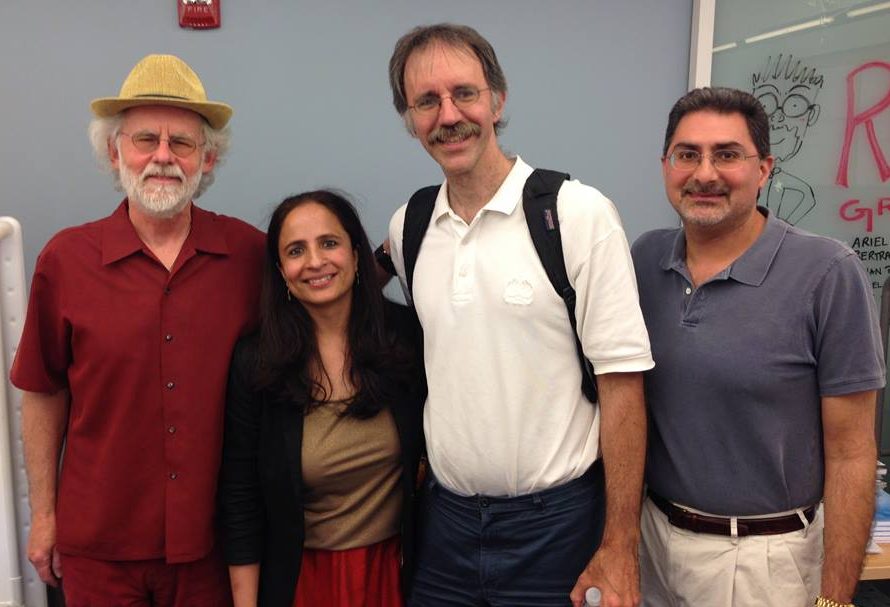 .] It was Steve who prompted me before I left for my first AERA paper presentation in 2011 (on ‘Robotics and Engineering for Middle and High School Students to Develop Computational Thinking‘) to seek out Mark Guzdial, introduce myself to him, and invite him to my presentation. I did all three, and Mark did indeed attend my presentation and chat with me afterward. I believe my dissertation topic would have looked very different were it not for the fact that my Ph.D. years at Stanford overlapped closely with Steve Cooper’s 5 years at Stanford. After I completed my Ph.D., I even co-taught a course at Stanford with Steve on ‘Teaching Introductory Computer Science’ to students from both CS (mainly TAs for the intro programming CS106 series) and Education (MA and Ph.D. students). I have since continued to collaborate with Steve on NSF grant-funded research and other projects.
.] It was Steve who prompted me before I left for my first AERA paper presentation in 2011 (on ‘Robotics and Engineering for Middle and High School Students to Develop Computational Thinking‘) to seek out Mark Guzdial, introduce myself to him, and invite him to my presentation. I did all three, and Mark did indeed attend my presentation and chat with me afterward. I believe my dissertation topic would have looked very different were it not for the fact that my Ph.D. years at Stanford overlapped closely with Steve Cooper’s 5 years at Stanford. After I completed my Ph.D., I even co-taught a course at Stanford with Steve on ‘Teaching Introductory Computer Science’ to students from both CS (mainly TAs for the intro programming CS106 series) and Education (MA and Ph.D. students). I have since continued to collaborate with Steve on NSF grant-funded research and other projects.
Congratulations, Steve!
I’d love to hear others’ reactions to the lists. I will probably dedicate a different post to discussing just the best papers, and yet another one to look back at my dozen or so contributions to SIGCSE in these last few years.
Shuchi Grover is a computer scientist and learning sciences researcher based in Palo Alto, CA. She is currently a Senior Research Scientist at Looking Glass Ventures and Visiting Scholar at Stanford University. Her doctoral work at Stanford University and subsequent research has focused on K-12 computer science education, and especially computational thinking in CS and STEM+Computing integration settings at the primary and secondary school levels.

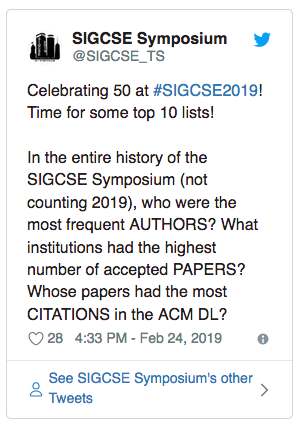
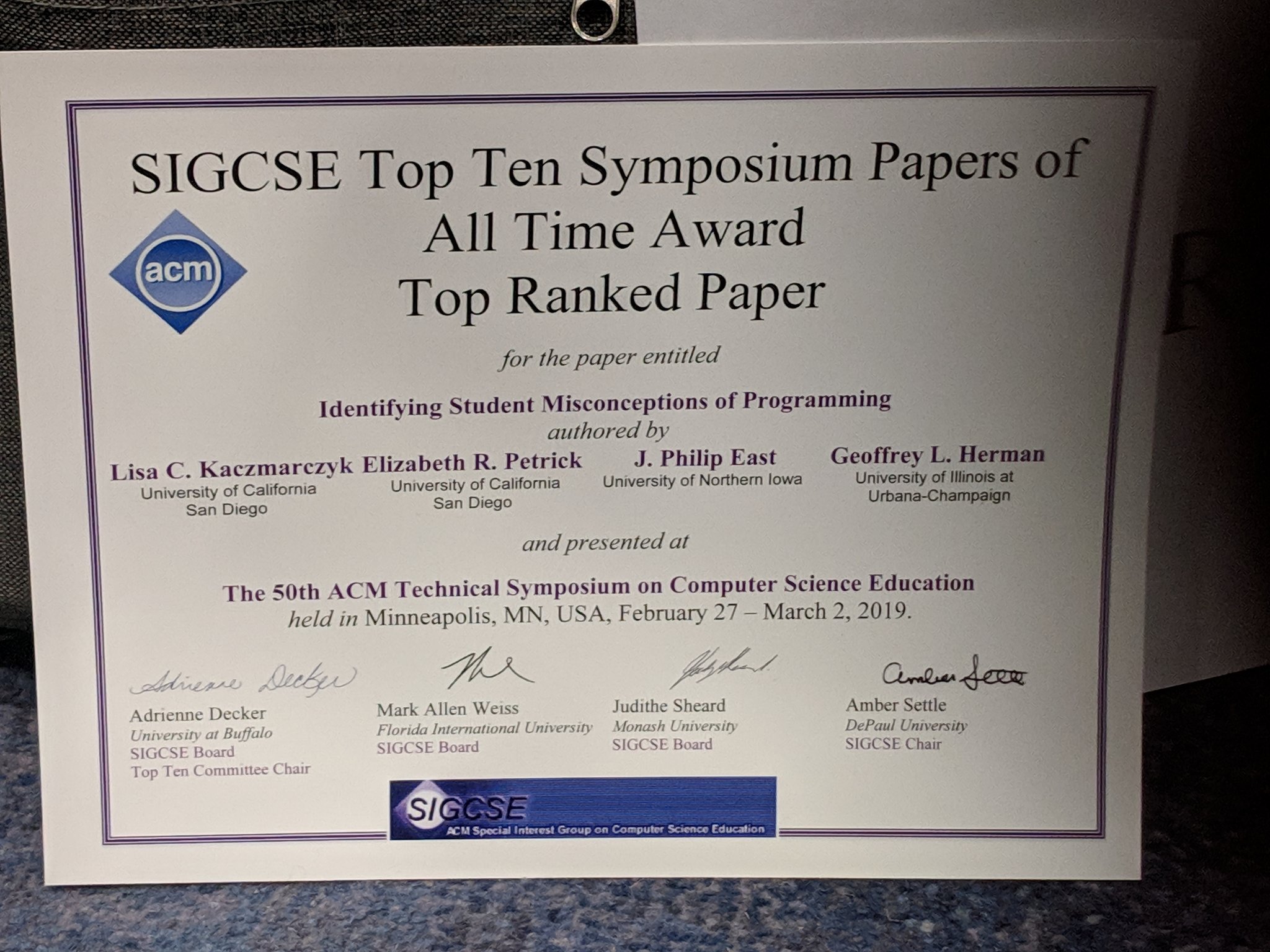
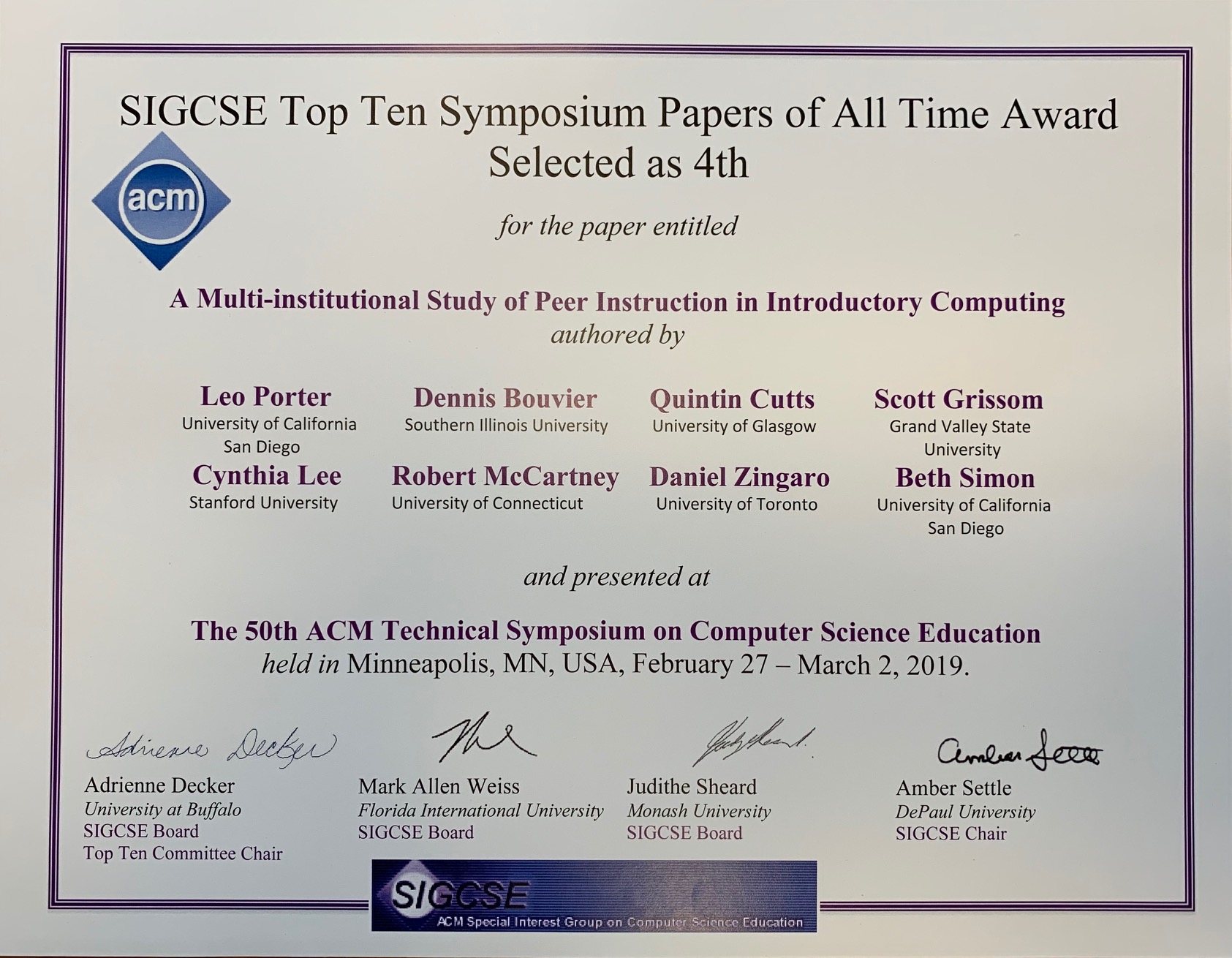



Join the Discussion (0)
Become a Member or Sign In to Post a Comment